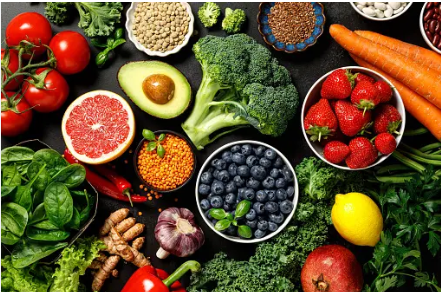

Introduction to Food Pairings
Food is more than just sustenance; it’s an experience. The right combination of flavors can transform a simple meal into something truly memorable. Imagine biting into a perfectly cooked steak, enhanced by the freshness of rosemary or enjoying creamy cheese paired with tangy fruit. These delightful matches elevate your dining experience and make every bite worthy of appreciation.
But how do you discover these perfect pairings? That’s where the art and science behind flavor combinations come into play. Whether you’re cooking at home or exploring new restaurants, understanding food pairings can take your culinary adventures to the next level. Let’s dive deeper into this flavorful world and unlock some secrets that will inspire your inner chef!
Food is more than just sustenance; it’s an experience. The right combination of flavors can transport you to another place, evoke memories, or create a sense of comfort. But how do you achieve that perfect harmony on your plate? Enter the world of food pairings. This culinary art involves marrying flavors, textures, and aromas to elevate your meals from ordinary to extraordinary.
Whether you’re hosting a dinner party or simply looking to spice up weeknight dinners, understanding which foods complement each other can transform everyday cooking into something special. From classic combinations like tomato and basil to adventurous mixes like chocolate and chili, the possibilities are endless. Ready to explore some tantalizing matches that will awaken your palate? Let’s dive in!
The Science Behind Flavor Combinations
Flavor combinations are rooted in chemistry. When you mix ingredients, their molecules interact, creating new tastes and aromas. This interaction is what makes certain pairs irresistible.
Take sweetness and acidity. Together, they balance each other out. Think of how a squeeze of lemon brightens a rich dessert or how balsamic vinegar enhances strawberries.
Then there’s umami, the savory depth found in foods like mushrooms and aged cheese. Pairing umami with saltiness can elevate an ordinary dish into something memorable.
Herbs and spices also play crucial roles in flavor pairing. Fresh basil on tomatoes isn’t just common; it’s scientifically backed by complementary compounds that enhance both flavors.
Understanding these principles allows for creativity in the kitchen. By experimenting with different elements based on science, you unlock endless possibilities for delightful culinary experiences.
Classic Flavor Pairings for Different Types of Cuisine
Italian cuisine often brings to mind the classic pairing of basil and tomatoes. This duo creates a fresh, vibrant flavor that elevates dishes like caprese salad and marinara sauce.
In the world of Asian cooking, soy sauce and ginger are a match made in heaven. Together, they add depth to stir-fries and marinades, enhancing the umami experience.
Mexican food shines with cilantro and lime. This combination brightens tacos, salsas, and guacamole with zesty notes that awaken your palate.
For Middle Eastern fare, consider the harmony of cumin and coriander. These spices bring warmth to stews, falafel mixes, or spice blends like za’atar.
French cuisine celebrates butter and garlic as timeless companions. They create a rich base for sauces or sautéed vegetables that are simply irresistible.
These pairs have stood the test of time across cultures—each offering unique tastes that can transform any dish into something extraordinary.
How to Create Your Own Perfect Flavor Matches
Creating your own perfect flavor matches can be an exciting culinary adventure. Start by considering the primary ingredient in your dish. Think about its natural characteristics—sweet, savory, or spicy.
Next, explore complementary flavors. For instance, if you’re using a rich protein like steak, think about pairing it with acidic elements such as citrus or vinegar to balance the richness.
Herbs and spices are also game-changers. A pinch of rosemary can elevate roasted vegetables while fresh cilantro adds brightness to tacos.
Don’t shy away from contrasts either; sweet and salty combinations often yield delightful results. Imagine chocolate drizzled over sea salt caramel—it’s a classic for reason.
Trust your instincts! Taste as you go and adjust accordingly until you find that harmony on your plate. Experimentation is key to discovering unique pairings that delight your palate.
Tips for Experimenting with Food Pairings in Your Cooking
Experimentation is key to discovering new flavor profiles in your cooking. Start with familiar ingredients and add an unexpected twist. A touch of citrus can brighten up roasted vegetables, while a hint of spice may elevate sweet dishes.
Don’t be afraid to mix textures as well. Combining crunchy elements like nuts or seeds with creamy sauces creates an exciting contrast that excites the palate.
Keep a journal or use your phone to note what works and what doesn’t. Documenting your culinary adventures helps you refine your approach over time.
Try pairing herbs with unusual proteins or grains. Basil on grilled peaches, for example, offers a refreshing surprise that tantalizes taste buds.
Invite friends for a tasting night. Sharing ideas expands horizons and inspires creativity in everyone involved. You might just stumble upon the next big hit!
Conclusion: Elevate Your Meals with Perfect Flavor Matches
Elevating your meals is all about making thoughtful choices in flavor combinations. By understanding the science behind food pairings, you can unlock a whole new level of taste in every dish. Classic pairings from various cuisines offer a reliable foundation. However, don’t hesitate to experiment and create your own unique matches.
Embrace the world of flavors around you. Use fresh herbs, spices, and seasonal ingredients to inspire creativity in your kitchen. Keep an open mind as you combine different tastes and textures; some unexpected matches might surprise you with their brilliance.
Making small adjustments to traditional recipes can lead to delightful discoveries. Whether you’re preparing a simple weeknight dinner or an elaborate feast for friends, the joy of cooking lies in exploration. Let each meal be an opportunity to play with flavors and elevate your dining experience. Happy cooking!
